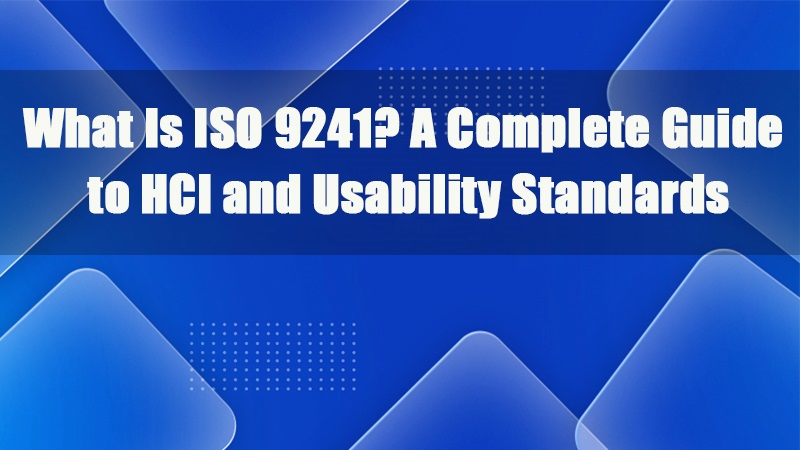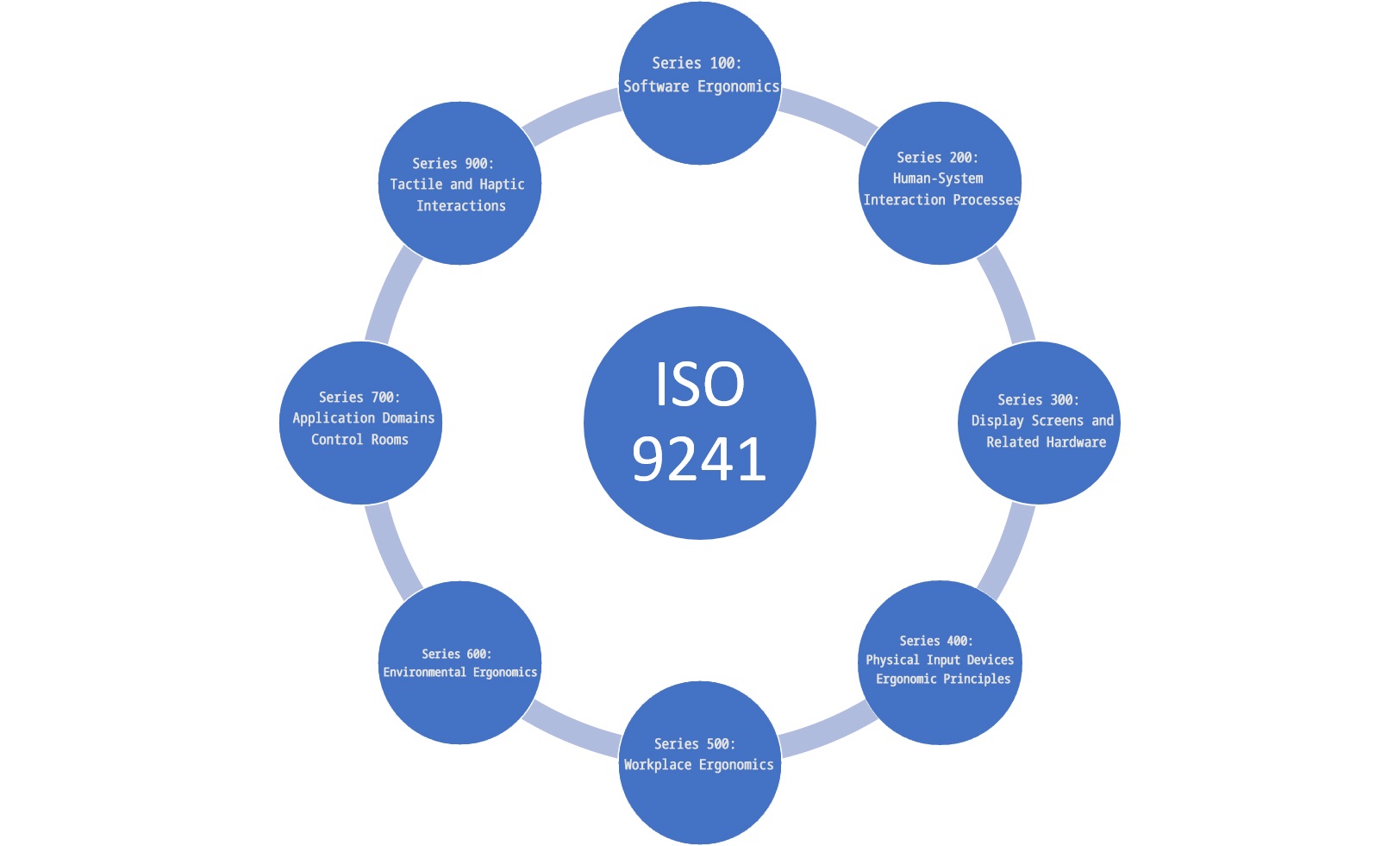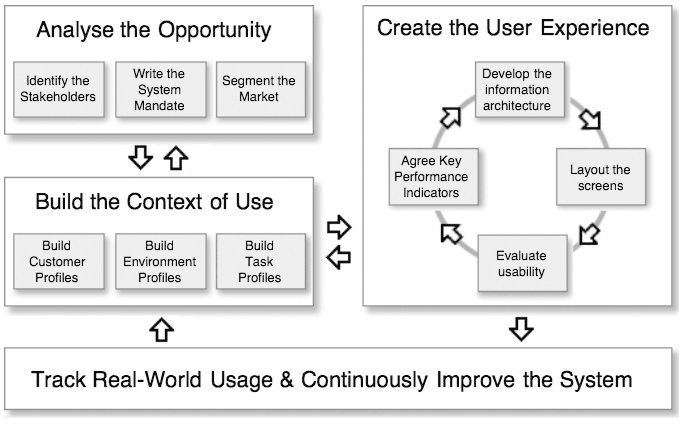
- 1.0Why Should We Care About Human-Computer Interaction (HCI) Standards?
- 2.0What Is ISO 9241?
- 3.0Structural Overview: What Does the ISO 9241 Series Include?
- 4.0Relationship with Other Standards
- 5.0Real-World Use Cases: How ISO 9241 Applies Across Industries
- 6.0Why Should Companies Adopt ISO 9241?
- 7.0Frequently Asked Questions (FAQ)
- 8.0Conclusion: Human-Centered Design Begins with Standards
- 9.0Resource :
1.0Why Should We Care About Human-Computer Interaction (HCI) Standards?
In the digital age, users interact with interfaces every day—from industrial control panels and web systems to medical terminals and in-vehicle displays. Poorly designed interfaces not only reduce efficiency but can also lead to errors and, in critical cases, endanger lives.
1.1Common Examples of Interface Issues:
- Unclear labels causing unintended machine activation in industrial settings
- Low contrast alarm interfaces delay emergency response
- Unresponsive medical touchscreens are hindering critical procedures
At the root of these issues is often a lack of systematic, user-centered design standards. The ISO 9241 series addresses this by providing internationally recognized guidelines on usability, accessibility, and ergonomics, aimed at creating safer, more effective, and user-friendly systems.

2.0What Is ISO 9241?
ISO 9241 is a multi-part international standard developed by the International Organization for Standardization (ISO). It focuses on human-computer interaction (HCI) and ergonomics, with three key objectives:
- Effectiveness– Can users successfully complete tasks?
- Efficiency– Can tasks be completed with minimal effort or time?
- Satisfaction– How do users feel about their experience?
2.1Broad Scope of Application:
- Software interfaces (desktop, web, mobile)
- Input devices (keyboards, mice, touchscreens)
- Industrial control systems and medical equipment
- Public-facing terminals such as ATMs, kiosks, and vehicle systems
To date, the ISO 9241 series comprises over 40 sub-standards, covering everything from design principles to environmental conditions.
2.2Key Update: ISO 9241-11:2018
In 2018, ISO 9241-11 was significantly revised to broaden its scope and evaluation criteria:
Expands focus from just “interfaces” to the entire system and service experience
Introduces evaluation of negative consequences (e.g., health, safety, privacy)
Defines “satisfaction” with greater attention to emotional and subjective aspects
Today, it serves as a core reference in UX design and human factors engineering.
2.3Human-Centered Design (HCD)
As defined in ISO 9241-210:
“Human-centered design is an approach to system design and development that aims to make systems usable and useful by focusing on users, their needs and requirements, and by applying human factors and usability knowledge.”
2.4Six Key Principles of HCD (from ISO 9241-210 & 110):
- Understand users, tasks, and environments deeply
- Involve users throughout the design process
- Base design decisions on user feedback
- Use iterative development—not a one-time process
- Focus on the whole user experience
- Ensure cross-disciplinary collaboration
2.5ISO 9241-110: Seven Dialogue Principles for Interaction Design
This part of the standard focuses on principles for designing user-system interactions, applicable across all types of HCI systems:
| Principle | Description |
| Suitability for the task | Helps users accomplish goals effectively |
| Self-descriptiveness | Interface is understandable and intuitive |
| Conformity with user expectations | Aligns with users’ prior knowledge and logic |
| Learnability | Easy for new users to begin using |
| Controllability | Users can control the interaction process |
| Error tolerance | Mistakes are recoverable and don’t cause severe consequences |
| Customizability | Interface can adapt to users or contexts |
⚠️ Note: This standard focuses on interaction design, not visual aesthetics or brand identity.
3.0Structural Overview: What Does the ISO 9241 Series Include?
The ISO 9241 series is organized into multiple parts, each focusing on a specific aspect of human-system interaction. Here’s a breakdown of its core classifications and representative standards:
| Category | Representative Standard | Description |
| Usability Definition | ISO 9241-11 | Defines usability through effectiveness, efficiency, and satisfaction |
| Human-Centered Design | ISO 9241-210 | Guides the process of user-centered system design |
| Display Requirements | ISO 9241-3xx | Standards for brightness, contrast, color, and screen performance |
| Input Devices | ISO 9241-4xx | Design guidance for keyboards, mice, touchscreens, and similar hardware |
| Environmental Factors | ISO 9241-5xx | Addresses ergonomic aspects such as lighting, noise, and workspace layout |
4.0Relationship with Other Standards
- ISO 13407: The predecessor to ISO 9241-210, now officially replaced
- IEC 62366: Usability standard for medical devices, complements ISO 9241
- ISO 6385: General principles of ergonomics for work systems
- DIN EN ISO 9241: German/EU adoption of ISO 9241 with equivalent content
5.0Real-World Use Cases: How ISO 9241 Applies Across Industries
| Application | Key HCI Design Considerations |
| Software Interfaces | – Clear and logical navigation – Optimized contrast and typography – Unified layout to prevent misclicks |
| Industrial Systems | – Large buttons for glove use – Consistent color codes for alarms – Panel layout that prevents accidental touches |
| Medical Devices | – Screens usable in various lighting – Touch input operable with gloves – Multimodal alerts (visual + audio) |
| In-Vehicle Systems | – Minimized menu depth to avoid distraction – Prioritization of frequently used functions |

6.0Why Should Companies Adopt ISO 9241?
| Value | Explanation |
| Enhanced UX | Reduces learning curve and user errors, improving overall satisfaction |
| Risk Reduction | Mitigates operational mistakes, essential in safety-critical sectors |
| Global Compliance | Meets usability standards for markets like the EU |
| Process Standardization | Establishes systematic design workflows and documentation practices |
| Regulatory Alignment | Supports legal compliance in regulated fields such as healthcare and transport |
7.0Frequently Asked Questions (FAQ)
Q1: Is ISO 9241 a mandatory standard?
No, it is not mandatory, but in regulated industries or regions like the EU, it can be effectively required for compliance.
Q2: Must I implement the entire ISO 9241 series?
No. You can select only the relevant parts—e.g., ISO 9241-11 or ISO 9241-210—based on your product’s nature.
Q3: How is ISO 9241 different from WCAG?
ISO 9241 focuses on interaction and ergonomics across systems, while WCAG (Web Content Accessibility Guidelines) is concerned with web accessibility specifically.
8.0Conclusion: Human-Centered Design Begins with Standards
ISO 9241 is more than just a technical specification—it represents a comprehensive approach to user-centered thinking. By embedding these principles into the design process, organizations can create systems that are safer, more efficient, and truly usable.


